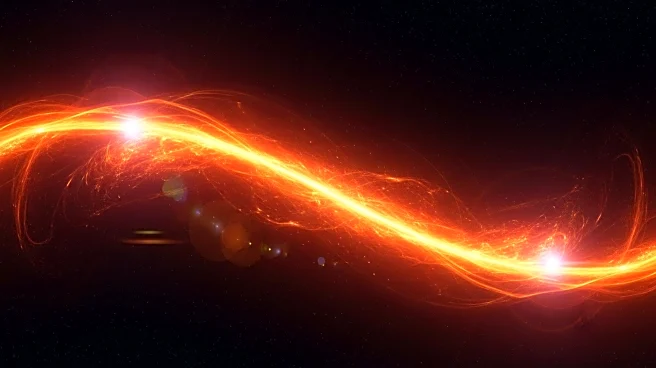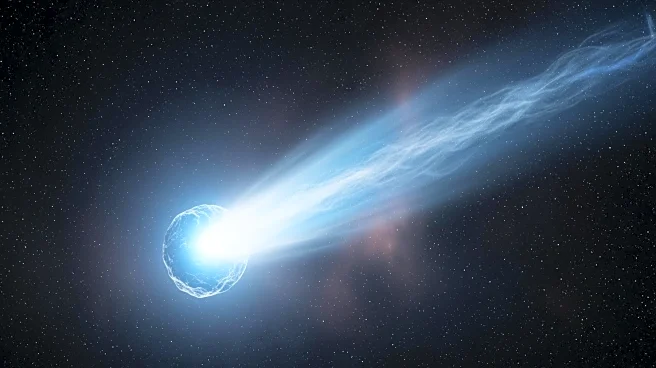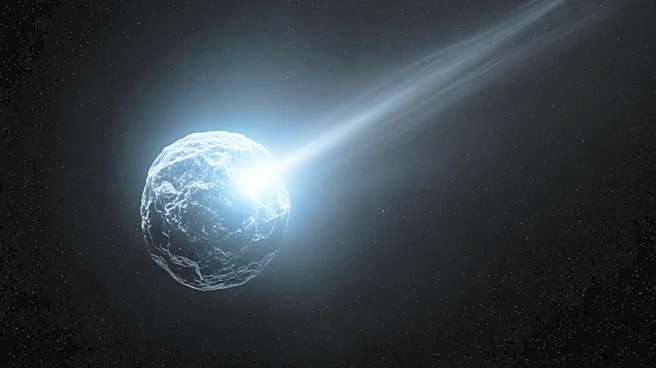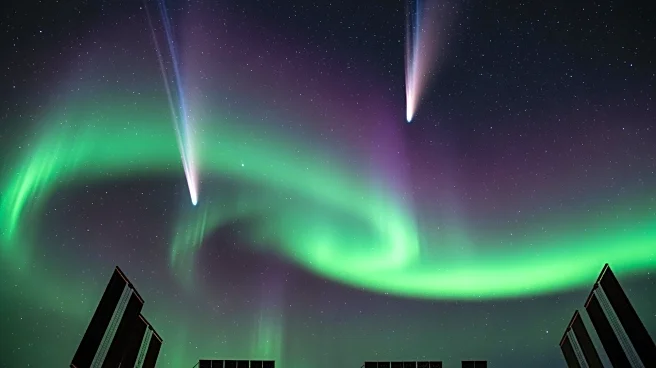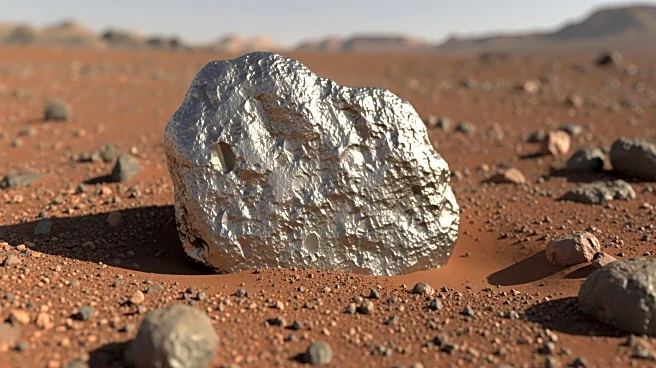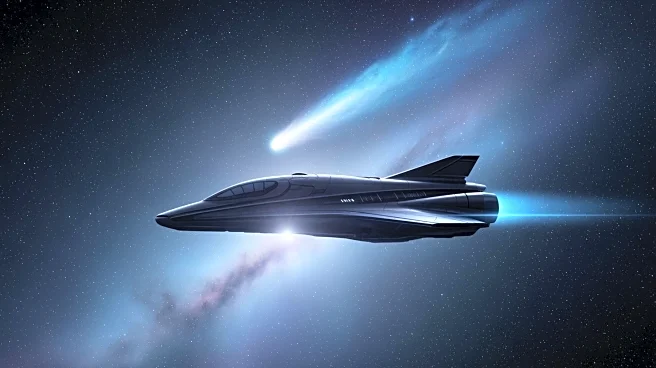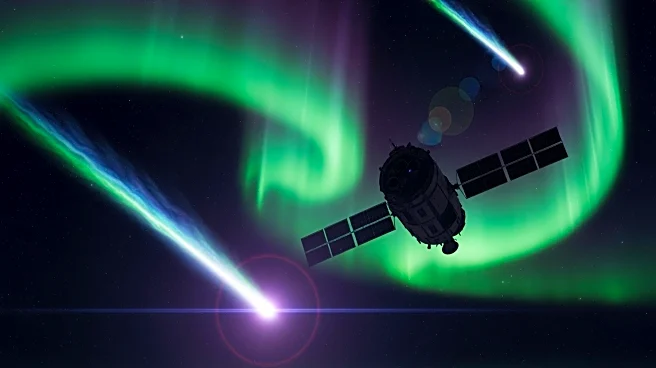What's Happening?
NASA's Voyager 1 spacecraft, launched in 1977, has reached a significant milestone by encountering a 'wall of fire' at the edge of the solar system. Traveling at 38,000 miles per hour, Voyager 1 has journeyed
over 12 billion miles from Earth. Originally tasked with observing the outer planets, the spacecraft now serves as an ambassador for humanity, exploring the unknown regions beyond the solar system. The 'wall of fire' refers to the heliosphere's boundary, where temperatures soared to 90,000 degrees Fahrenheit. This discovery confirms the existence of the heliosphere, a bubble formed by solar winds, separating the solar system from interstellar space. Voyager 1's findings have provided valuable insights into the heliosphere's shape and behavior, revealing it to be more teardrop-shaped than spherical.
Why It's Important?
The discovery of the heliosphere's boundary by Voyager 1 is crucial for understanding the solar system's interaction with interstellar space. This knowledge impacts scientific theories about solar winds and their influence on space weather, which can affect satellite operations and communication systems on Earth. The data collected by Voyager 1 helps scientists refine models of the heliosphere's dynamics, potentially leading to advancements in space exploration technology. Furthermore, understanding the heliosphere's structure aids in predicting cosmic radiation levels, which is vital for the safety of future manned missions beyond the solar system. The Voyager mission continues to contribute to our understanding of the universe, highlighting the importance of long-term space exploration projects.
